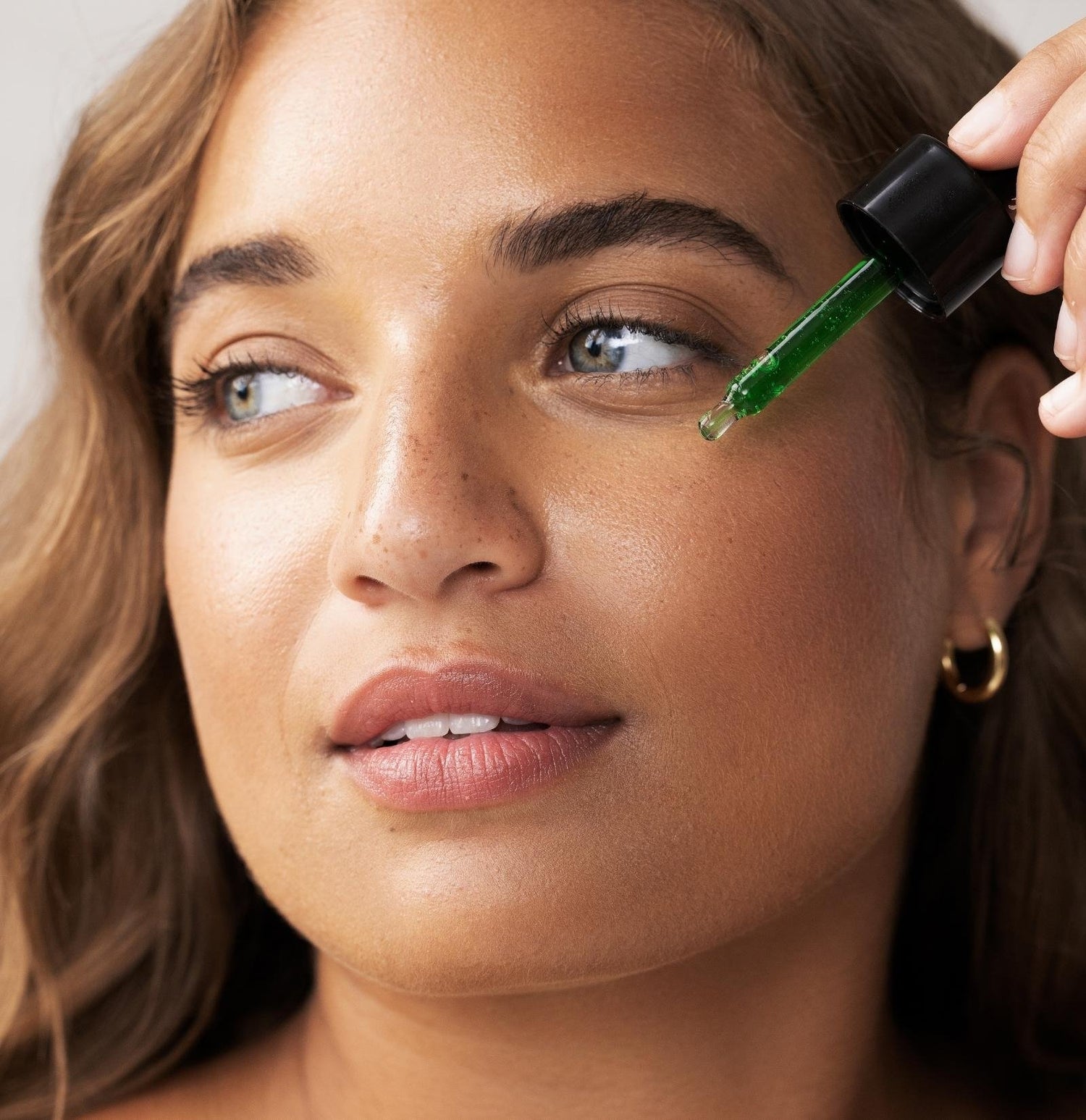So, you want to take care of your skin and obtain the complexion you’ve always dreamed of, but you have no clue what your skin type is? Well, if that is the case, then listen here. Skincare is not a one-size-fits-all. There are various skin types and concerns, and knowing this information is paramount for crafting a skincare routine that is going to actually work for you!
We need to first start off by helping you understand what type of skin you have, and then we can help you figure out what products are going to help you get the best results! This matters because if you are going to invest your time and money into skincare, you need to be investing in the products that will benefit you most! Got it? Good!
The absolute EASIEST way to understand your skin type and what products are going to work best for you is to take our free, nine question skin quiz, which is basically a little questionnaire to help you learn all about your skin! Think of it as a quick, simple way to find out something fun about you in less than 5 minutes! Take the quiz HERE!
The second thing you can do is educate yourself on the various skin types, and then make an educated guess on what category you fall into. I’ll break down the skin types for you now! Just so you know, there are 4, well actually five (I’ll explain), skin types and you don’t get to pick your skin type. The type of skin you have is what you are born with!
Let’s start with the first skin type: Normal. I know. What does “normal” even mean? Well, in the skin world, Normal skin type means that your skin isn’t dry and it isn’t oily, it is right smack in the middle. Normal skin functions well, doesn’t develop acne, doesn’t get sensitive to things easily (unless it is an extreme situation, like below zero temps), and the barrier is generally healthy. Normal skin possesses pores that are normal in size (not huge, not invisible) and the main skin focus of this skin type is to simply maintain results, keep the skin healthy, and prevent aging.
The next skin type (these are in no particular order by the way!) is: Dry. Dry skin is like it sounds. It tends to get dry easily, and can feel rough and scaly at times. Dry skin has pores that are merely invisible to the naked eye, which is nice visually, but problematic from a barrier standpoint as the skin tends to get dry much easier. Dry skin can also appear more dull at times, it can seem as if it is a little more sensitive, and most people with dry skin don’t develop acne unless it is hormonal (chin/jawline). The main goal for people with dry skin is to hydrate, protect, and keep the barrier happy so it doesn’t become too flaky.
The third skin type is: Oily. This skin type, while it sounds unappealing, is actually amazing when it comes to anti-aging and fine lines. Having Oily skin keeps the skin more hydrated and nourished, allowing for the skin to look more youthful. However, Oily skin also comes with the unfortunate reality of being more acne-prone, as increased oil production can clog pores. Also, visually, the pores on the face are going to look very large in size all over the face, including the cheeks. Oily skin typically develops blackheads really quickly, can break out easier, and gets shiny throughout the day. The main skin goal for oily skin is to manage oil production and keep the pores clear through exfoliation.
The fourth skin type, Combination, is the most common skin type. Our CEO, Ashley Nordman, actually has “combo” skin herself. What this means is that your skin is oily in the T-Zone, but more normal or dry on the cheeks and outer areas of the face. Sometimes, Combination skin will develop dryness during the winter months or around their mouth from time to time, but that is about it. Combination skin has pores that are big in the T-Zone area where they develop more oil, but then have more normal looking pores on the cheeks and outer edge of the face. Combo skin is also very acne-prone, as the skin is constantly trying to find balance between water and oil. Typical goals for Combination skin involve balancing the skin barrier, preventing breakouts, and managing oil production.
The last skin type is: Sensitive. While this technically is NOT a skin type, we consider it to be one as Sensitive skin must be addressed in a unique way, despite what true skin type you have. So if you are someone who has Oily skin type but your skin is sensitive, then you cannot address the oily skin until you first address the sensitivity. So, this is the one case where your skin type can change, because once you address and correct sensitive skin, you can then focus on your actual skin type and work on keeping your barrier healthy.
Sensitive skin is, as you suspect, sensitive to many elements. This includes active skincare ingredients, cold, heat, dry or humid climates, and certain ingredients. Sensitive skin can develop for various reasons including medications, medical conditions, or using improper skincare products for extended periods of time. Many people who come to us with sensitive skin are actually sensitized, meaning their skin becomes irritated by using harsh products on their barrier, causing the skin surface to become too thin and dysfunctional to tolerate products other than water or very basic cleansers. The goal of this skin type is to simply protect, nourish, and heal the skin barrier so that it can become healthy and get back to working how it should!
What skin type do you think that you have? Do you have an idea? I strongly suggest taking our nine question skin quiz to find out your exact skin type without having to guess, and it’ll even help you figure out what products are best to begin with for seeing optimal results!


